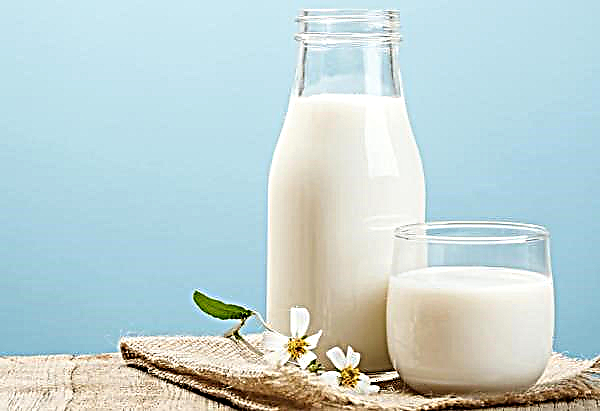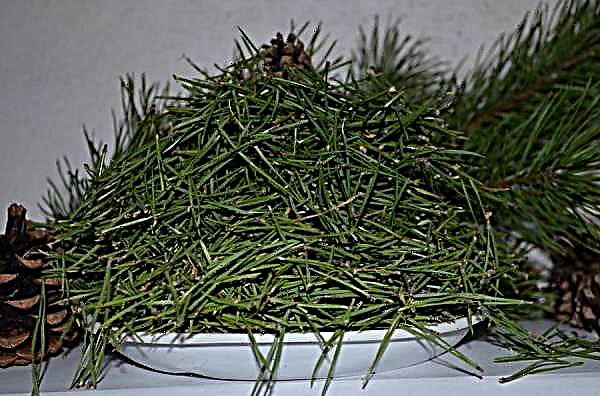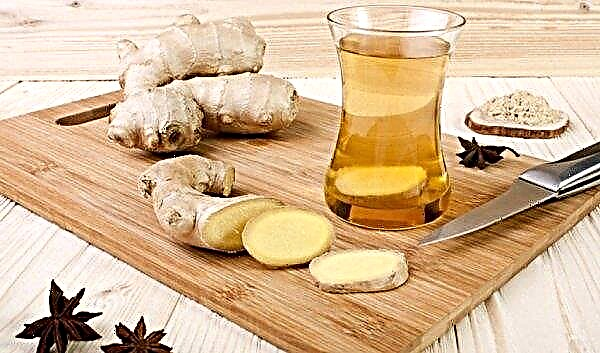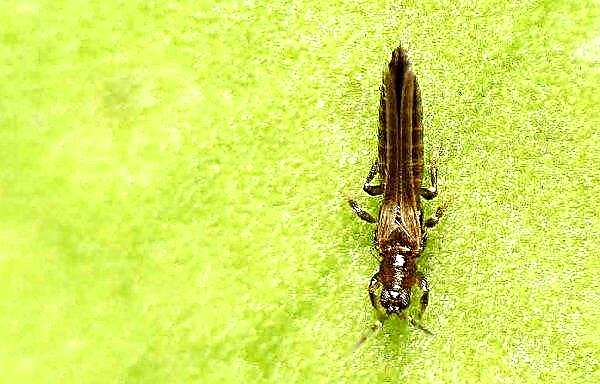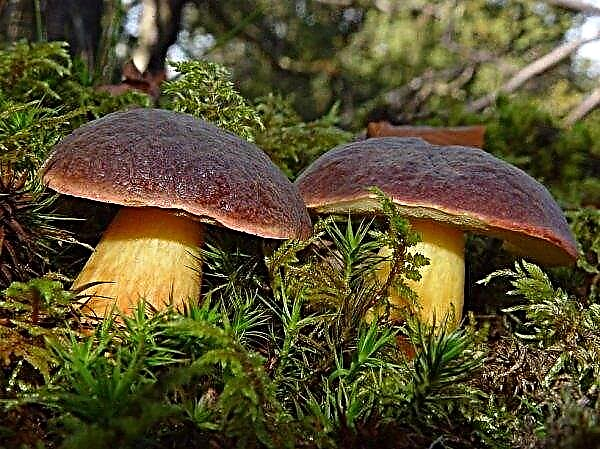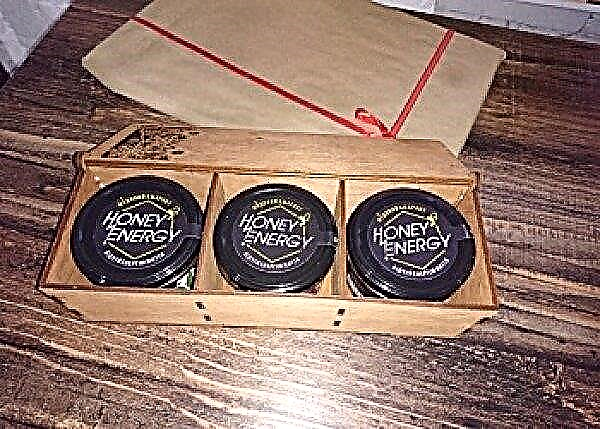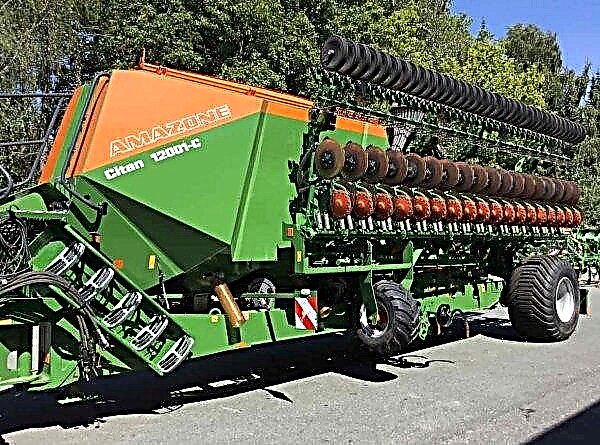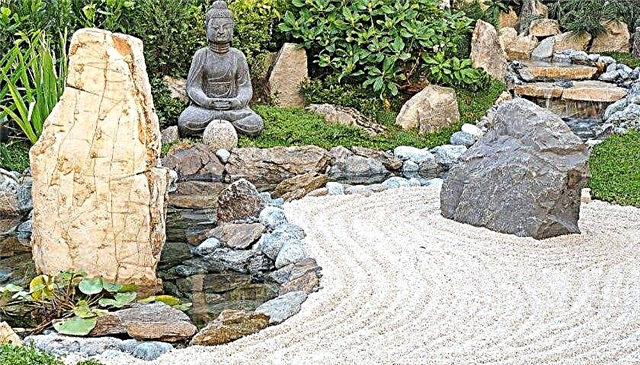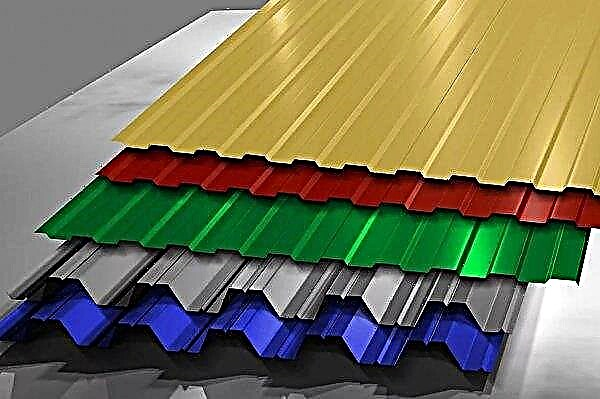Hydrangea can become a real decoration for any garden, annually pleasing with its lush and bright flowering, but for this it is necessary to properly plant the plant and provide it with proper care. There are several ways to plant a flower in open ground, but the procedure itself should be carried out at an appropriate time. About what time you need to plant hydrangea, the main ways of planting the plant and step-by-step instructions for actions, as well as recommendations to help care for young bushes - later in the article.
When to plant hydrangea
Hydrangea can be planted in open ground in spring or autumn. In each of these seasons, planting has some features, and the choice of the exact timing of the procedure depends on the climate of a particular region.
In spring, hydrangea should be planted after stable warm weather sets in and the probability of return frosts disappears. In autumn, the procedure is performed at least 3-4 weeks before a significant drop in temperature, so that the young plant has time to adapt.
Important! Pits for spring planting of the flower are prepared in the fall, and with autumn planting of the plant in the soil - in about 2-3 weeks.
Fall
For areas with mild winters, it is permissible to plant hydrangea on a site in the fall. In order for the plant to gain strength before a cold snap, this procedure is performed in the first half of September, while the weather is warm. For southern regions, in which the air temperature in the fall has long been kept at positive levels, hydrangea is allowed to be planted in early October.
Autumn is suitable for planting a plant in open ground only if the seedling has a developed root system. Strong roots will help hydrangeas quickly take root in the soil before frost.
In the spring
Spring planting of hydrangea is performed after the snow melts, and the earth warms up well by the sun. This usually happens in late spring, so the best time to plant planting material in the soil is early May.
But if warm weather is established earlier, then you can plant hydrangea in the second half of April. In this case, it is necessary to exclude the possibility of recurrent night frosts, since young plants can die from hypothermia.
Did you know? The Latin name of the flower (Hydrangea) comes from the words "hydor" - water, "aggeion" - a vessel, which indicates the moisture loving nature of the plant.
When is better
Hydrangea is a heat-loving flower, so it is best to plant it in open ground in spring. Moreover, the probability that the plant will successfully take root in a new place is very high. Spring planting can be carried out in a region with any climate, because it allows hydrangeas to take root and grow stronger before the onset of winter.
Features regional landing
When choosing specific dates for hydrangea planting, it is necessary first of all to take into account the climatic features of the growing region, i.e. the geographical location of the region affects weather conditions.
Features of choosing planting dates by region:
- Ural and Siberia - beginning of May;
- Moscow Region, the territory of the Middle Strip - the end of April or the first half of September;
- southern regions - mid-April or early October.

Step-by-step guide for a proper fit
Before planting, you need to find a place in which all the necessary conditions for the normal development of hydrangea are created.
A place for a plant is selected according to the following criteria:
- sufficient lighting - in the morning the flower should be under the sun, and in the middle of the day should be in partial shade;
- lack of draft and strong wind - under its influence the shoots of the plant can break, and the bush is more often affected by diseases;
- the presence of free space - it is necessary for the growth of shoots in width;
- loose and fertile soil - a substrate with a neutral or slightly acidic reaction is best suited;
- the absence of large trees and shrubs nearby - the minimum distance to them should be at least 2.3 m so that hydrangea receives a sufficient amount of sun and nutrients from the soil.
 Florists most often cultivate panicle and large-leaved (or garden) hydrangea. In the first case, between the neighboring plants it is necessary to leave a distance of 1.4–2.4 m, and in the second - from 1.2 to 1.6 m.The depth of the planting pit is 50–60 cm, and the diameter is from 50 to 65 cm ( depending on the size of the earthen coma around the roots of the seedling).
Florists most often cultivate panicle and large-leaved (or garden) hydrangea. In the first case, between the neighboring plants it is necessary to leave a distance of 1.4–2.4 m, and in the second - from 1.2 to 1.6 m.The depth of the planting pit is 50–60 cm, and the diameter is from 50 to 65 cm ( depending on the size of the earthen coma around the roots of the seedling).
To fill each cavity, a substrate is prepared consisting of the following components:
- 1 part humus;
- 1 part of turf land;
- 1 part of sheet land;
- 1 part peat;
- 25 g of urea (urea);
- 30 g of potassium sulfate;
- 70 g of superphosphate.

The planting procedure itself is performed identically for all varieties of the plant. At the same time, you can grow a new flower instance from a seedling, seed, cuttings or layering, adhering to a certain sequence of actions.
Seedlings
The easiest way to grow hydrangea is from a seedling purchased in a nursery. It is recommended to choose a plant that is 3-4 years old with a closed root system, elastic branches and a flat trunk surface. Such specimens are the strongest and are best rooted in the area.
Step-by-step instructions for planting a seedling:
- Pour on the bottom of the landing pit a little nutritious and loose substrate.
- Lower the lower part of the plant into the recess along with an earthen lump formed around the roots. The root neck should be only 2-3 cm below the surface of the soil.
- Tamp the ground lightly around the seedling with your hands. Form the area of the trunk circle.
- Water the plant with 8-12 liters of warm water so that the earth around it is well wet.
- When the moisture is absorbed, mulch the trunk circle with dry sawdust or bark, peat. The thickness of the mulch layer should be 6-8 cm.

Layering
If there is already one instance of paniculate or large-leaved hydrangea on the site, then a new plant can grow from the lay. As a mother bush, it is recommended to choose a small instance with flexible lateral branches that are convenient to bend to the ground.
Did you know? You can change the color of hydrangea by adjusting the acidity of the soil. When grown in alkaline soil, the petals of the plant turn pink, in the neutral substrate they turn beige, and on acidic soils they acquire a bright blue color.
Step-by-step instructions for growing hydrangea from a layering:
- In spring or early summer, choose a side shoot on the mother plant. Dig under it a trench about 15 cm deep radially extending from the bush.
- Make a few shallow cuts on the surface of the selected branch to accelerate the appearance of roots.
- Bend the shoot by placing it in the prepared trench. Above the ground, the top of the branch should remain about 20 cm long. Fix the stem in this position with a staple or hairpin.
- Sprinkle a recess with a branch of loose soil mixture consisting of equal parts of peat and garden soil.
- Pour the shoot with warm water. After absorbing the liquid, mulch the earth with dry bark or peat.
- Irrigate a dug up branch with water as the soil dries. Regularly remove weeds, loosen the soil.
- The next year after the procedure, carefully separate the emerging offspring from the mother plant, moving them to a permanent place according to the general rules for planting seedlings.
Seeds
The most time-consuming and lengthy method of growing hydrangea is the seed method. The seed of the plant can be bought in a specialized store or independently collect it from nondescript flowers on top of a bush after flowering is completed. The resulting planting material is embedded in a container with soil around the middle of February in order to obtain seedlings, which can later be transplanted to the site.
Important! Hydrangea seedlings are transplanted to a permanent place in the garden only after they reach the age of 2-3 years. Prior to this, young plants are grown at room conditions so that they grow stronger.
To grow a flower from seeds, adhere to such an algorithm of actions:
- Sort planting material, discarding damaged specimens. Soak it in the Epina solution for 1 hour.
- Place the seeds between the layers of the napkin or two cotton pads, soak well with water. Leave for several days at room temperature until small seedlings appear.
- Prepare a nutrient substrate from equal parts of peat, sheet land and sand.
- Fill the wooden box with soil. You can use plastic containers for planting seedlings.
- Spread the seeds on the surface of the soil, slightly pressing them into the soil. Sprinkle with a small layer of sand, and then sprinkle lightly with warm water.
- Cover the container with foil. Put in a room with diffused lighting and an air temperature of about + 20 ° C. Periodically raise the film for ventilation, irrigating the soil in the container from the spray gun as it dries.
- After the appearance of green shoots (after 2-3 weeks) remove the shelter. Water the seedlings moderately with warm water, and after the appearance of 2-3 leaves on them, plant the sprouts in small individual containers.
- In summer, keep young plants in a well-lit room with an air temperature of + 20 ° С, and in winter move them to a dark and cool place (about + 10 ° С).
- In the warm season, irrigate sprouts from the spray gun, loosen the soil in a pot and feed the seedlings with fertilizers (Agrovita, Agricola) twice a month according to the instructions on the package.
- For the winter, reduce the number of irrigations to 2-3 times a month, and stop feeding before spring.

Cuttings
One of the easiest ways to get a new plant from a hydrangea growing on a site is to plant cuttings. Planting material is harvested in late spring or July, choosing green shoots of the current year on the bush.
Step by step instructions:
- Choose a young sturdy shoot with several pairs of leaves. Cut it at an angle of 45 ° at a distance of about 12 cm from the top.
- Trim the upper part of the resulting stem at an angle of 90 °. Remove the lower leaves and all available buds from it.
- Prepare a plastic container or container for growing seedlings. Fill the container with a loose mixture of 2 parts of peat soil and 1 part of sand. Pour a layer of coarse sand about 2 cm thick on top.
- Dip the bottom of the shank into the Epina solution for 1 hour. It is good to moisten the soil mixture in a container with warm water.
- Submerge the bottom of the cuttings in the soil. When rooting several copies, the distance between them should be about 5 cm.
- Sprinkle the soil with warm water. Cover the cuttings with glass jars or cut plastic bottles to create a greenhouse environment.
- Keep the container with seedlings in a warm room (at least + 20 ° C) with diffused lighting. Periodically raise the hood to ventilate the plants, moistening the soil around them as they dry. 30 days after planting, roots should form.
- Seedling rooted cuttings in individual pots with a diameter of about 10 cm, filled with a mixture of garden soil, peat and sand (ratio 2: 2: 1). Water them as the top layer of soil dries, performing loosening of the soil in the tank and removing weeds.
Features of hydrangea care in autumn
After the young bush is rooted in a permanent place, he needs to create all the necessary conditions for further growth and flowering. Hydrangea care does not require a lot of time, but should be carried out according to some rules.
The gardener should take care of sufficient soil moisture around the plant, timely application of nutritious fertilizers to the soil, and also adhere to the recommendations for pruning hydrangea and its preparation for winter.
Did you know? As a result of archaeological excavations conducted in the northern regions of the United States, evidence was obtained that hydrangea grew on the globe 40 thousand years ago.
How to water
Of key importance to the growth and normal development of a young bush is proper watering. Hydrangea negatively reacts to a lack of moisture in the soil, but too much fluid is also harmful to the plant.

Basic watering rules:
- in the warm season, in dry weather, the plant is irrigated once a week, and if the summer is cool, then watering is performed every 10-15 days;
- for each instance spend 15-20 liters of warm water;
- if it is rainy, then additional watering is not required;
- water is poured into the area of the near-trunk circle in the morning or in the evening - so it is completely absorbed into the ground and does not evaporate in the sun;
- if the autumn is dry, then watering is carried out until mid-September, so that the roots of the plant are well saturated with moisture before wintering.

Lighting
Hydrangea belongs to the photophilous plants and is grown in open areas, but direct sunlight can cause sunburn. Therefore, if the bush grows in an open area, then in the middle of the day it must be shaded with tulle, providing the flower with diffused light. It is especially important to carry out this procedure for young seedlings that have an increased sensitivity to the bright sun.
Temperature and humidity
In hot and dry weather, hydrangea shoots can dry out, despite adequate soil moisture. In this case, the air around the bush needs to be moistened, periodically irrigating the crown of the plant with warm water. The procedure is carried out 1-2 times a week in the morning or in the evening, because burns may appear on the leaves as a result of daily spraying.
Large-leaf hydrangea can tolerate frosts down to -10 ° C, so at lower temperatures it is recommended to transplant it into the room for the winter. The panicled variety can winter on the street in the presence of additional shelter and is able to tolerate a drop in temperature to -28 ° C.
Important! Hydrangea tolerates hot weather with sufficient watering. But low air temperatures can be detrimental to the plant, especially when grown in the northern regions.
How and what fertilizers to apply
In order for the young plant to well grow green mass and please lush flowering, it must be fed with nutrients.
Basic rules for fertilizing:
- the bush needs to be fed only between the end of May and the beginning of September;
- at the end of spring, 20 g of urea, 40 g of superphosphate and 30 g of potassium sulfate are added per 1 m² of area;
- at the budding stage and during active flowering, the bush is fertilized with phosphorus-potassium substances, spending 60 g of superphosphate and 40 g of potassium sulfate for each instance;
- during the growing season, 3-4 irrigation is carried out with a pink solution of potassium permanganate - this helps to strengthen the shoots and increase the immunity of the plant;
- in September, 20 kg of rotted manure is introduced under each plant.
Important! The first time hydrangea is fed with fertilizers only 2 years after planting in open ground.
Acidification
So that the hydrangea inflorescences are bright, and the leaves do not turn yellow, you need to monitor the level of acidity in the soil around the bush. The optimal indicator is pH 5.2–6.0. To maintain soil acidity at such a level, in the summer every 14 days hydrangea is watered with a solution of 10 liters of water and 1 tablespoon of citric acid.
Pruning
Another essential component of proper hydrangea care is pruning. It helps to give the bush a neat shape and prevents excessive thickening of the crown, and also stimulates lush flowering.
Did you know? Hydrangea came to Europe thanks to the head of the first French round-the-world expedition Louis-Antoine de Bougainville. In 1768, he took this shrub from the island of Mauritius and brought it to his native country.
The basic rules for this procedure:
- hydrangea is cut off only after it reaches the age of 3-4 years;
- dry and damaged shoots are removed in early April or mid-September;
- forming and thinning pruning is performed only in the early spring, before the sap flow begins;
- large-leaved hydrangea is subjected only to sanitary, anti-aging and thinning pruning, and for panicled variety, a shaping haircut must be added to these procedures;
- in garden hydrangea, one branch older than three years is cut annually, replacing it with a young shoot - this stimulates lush flowering;
- panicle hydrangea branches that faded last year are shortened by 1⁄3 of the length;
- for all plant species, dried inflorescences are cut off at the beginning of autumn so that the branches do not break off under the weight of snow accumulating on the flowers.

Panicled hydrangea can be shaped like a small tree. To do this, on the young plant, the most developed and strong shoot is chosen, and the remaining branches are removed. In the future, the main conductor is annually shortened to the strongest kidney until it reaches 1 m in height, and then pinch it. From the lateral branches, 4-5 skeletal shoots are left to form a crown.
Winter preparations
Large-leaved hydrangea belongs to heat-loving plants, so it is recommended to grow it in containers dug into the ground, and dig it up and bring it into the room for the winter. On the street, this species can winter only in the southern regions, where frosts do not exceed -10 ° С.
Panicled hydrangea is more resistant to low temperatures, but it needs winter shelter.
To prepare the bush for wintering, perform the following actions:
- the shoots are pulled together with a soft rope into a bundle - this will protect them from breaking;
- the base of the bush is highly covered with earth, and the area of the trunk circle is covered with a layer of mulch from peat or dry needles;
- young plants with flexible stems are bent to the ground, and then covered with branches of spruce branches;
- around large bushes they make a kind of hut, covering it on top with burlap or agrofibre, and fill the inside with fallen leaves, peat or dry compost;
- Winter shelter from the bush is removed only in spring, when the probability of return frosts disappears.
 1- tilted shoots, 2 -cocking, 3- spruce branches, 4- lutrasil, 5- stone
1- tilted shoots, 2 -cocking, 3- spruce branches, 4- lutrasil, 5- stoneWhat are the landing errors?
Subject to all the above recommendations, the young plant quickly adapts to a new location and begins active growth. But in some cases, the grower makes mistakes when planting a bush, which can even lead to the death of hydrangea.
Important! In order to further disinfect the soil, reducing the risk of disease, it is recommended to spill the soil mixture for the planting pit with a pink solution of potassium permanganate.
These errors include:
- insufficient fertilizer in the soil - the plant lacks nutrients, so it begins to wither. To solve the problem, you need to add fertilizer to the planting pit according to the instructions presented above;
- low soil acidity - causes yellowing of the leaves of the flower (chlorosis) and interferes with flowering. You can acidify the soil with a solution of citric acid or add aluminum-ammonium alum, bought in a specialized store;
- damage to the roots of a seedling - can be observed when shaking the ground from the bottom of the plant. To prevent this problem, hydrangea with a closed root system is selected for planting and planted with an earthen lump;
- strong root neck deepening - leads to decay of the young bush and its death. When planting seedlings, it is permissible to immerse the neck in the soil no more than 2 cm;
- drying the roots of a young plant before planting - most often occurs when buying copies with an open root system. To avoid such a problem, you need to purchase hydrangea with closed roots and immediately plant it in the ground.

Growing hydrangea on your own site is not difficult. With the help of instructions and recommendations for care presented in the article, every gardener will be able to properly plant the plant and get a lush bush that will regularly delight the eye with its bright colors.


